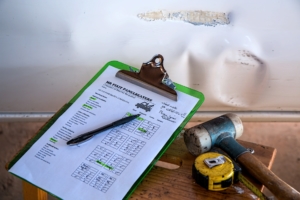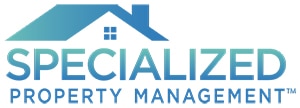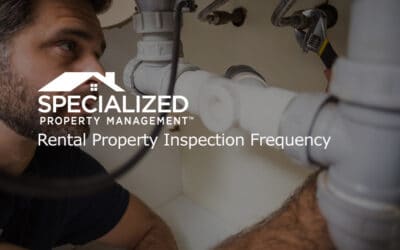Inspecting your Fort Worth rental property will help you keep it well-maintained and ensure your tenants are following the terms of the lease. There are a few specific times when inspections are critical. Before a tenant moves in and after a tenant moves out, you’ll need to inspect the property and document the condition. It’s also important to get inside the property to take a look around at least once during a tenancy. Driving by the home once in a while without going inside can also give you an idea of whether your tenants are taking care of the property the way you expect them to.
Conducting a Move-In Inspection: Preparing for a Tenancy
Your property should be in good shape before a tenant moves in. As we discussed in a previous blog, preparing your property for the rental market means making sure everything is clean, functional, and habitable for your tenants. Once you have a tenant approved and the move-in funds are received, you need to prepare for the tenancy. The move-in inspection is meant to make sure everything is working and your home is rent-ready. It’s also an opportunity to document the way the property looks before you hand over the keys to your tenants. This is important because you’ll expect to get the property back looking the same, except for general and permitted wear and tear.
Documentation and detail are the most important parts of your move-in inspection. You’ll want to go through every room. You’ll want to open every closet and every drawer. Check the ceilings, the floors, the walls, the doors, and the windows. Absolutely everything must be inspected, photographed, and noted. This is the only way to protect yourself after a tenant moves out. If damage is left behind and you want to charge the tenant’s security deposit, you’ll need to demonstrate that the property looked much different before the tenant moved in. This inspection helps you do that.
We recommend an inspection checklist to help you stay organized and cover all the bases. Your checklist should include:
- A list of rooms, amenities, appliances, and other features of the home.
- Checkboxes for things like air conditioning units, water heaters, furnaces, etc.
- Space to make notes about anything you find. You might want to note a chip in the countertops or some worn carpet right at the entryway, for example.
- Notes about pictures and videos you’ll take.
- Space for notes on the move-out inspection, which will come later.
The pictures must be date and time stamped so you can show when they were taken. Photograph everything. You’ll want to file these pictures with your inspection checklist. Collect photos of the interior and the exterior. These pictures must show the condition of every part of your home.
When your tenant moves in, provide a copy of your inspection checklist. Invite your tenants to add anything that you might not have noticed. Maybe they’ll report that a light isn’t working in a closet or there’s a hole in a window screen. Both of you need to sign the inspection report, agreeing to the condition of the property at move-in.
Drive-by Inspections of Your Fort Worth Rental Property
After an excellent screening process, you have likely placed tenants who are responsible and qualified to take care of your property. Even if you’re confident with the tenants you have placed, it never hurts to drive by your property once in a while. This allows you to check things out without disturbing your tenants or invading their privacy.
As you’re driving by, check out the exterior of the property and note whether the lawn and yard are being maintained. Look for clutter or debris outside the home. See if you notice evidence of pets. If there’s a German Shepherd running around and your tenants didn’t apply for the home with any pets, you will want to address this lease violation. Drive by at night when you can, to ensure there’s enough exterior lighting and to see if the home looks quiet. If you’re getting noise complaints from neighbors, this is a good way to see what your tenants are up to.
If you don’t live close to your rental property, it will be hard to drive by it from time to time. This is where a professional Fort Worth property manager can be invaluable. Your property manager will be local, and close to the home. A good property manager will drive by and be your eyes and ears whether you’re out of town, out of state, or even out of the country.
Inspecting an Occupied Rental Property
Some property owners want to get inside their home every few months to check on it and make sure the tenants are taking care of it. We can understand this desire, but we believe you have to balance your routine inspections with your tenant’s privacy and rights to enjoy the home. This may be a property that you own, but it’s someone else’s home. You cannot show up every month demanding to go inside.
We recommend a routine inspection of the rental property every year. Give your tenants plenty of notice and let them know you’ll be inspecting for maintenance issues and to check the systems and functions of the home. A good tenant will not feel threatened by this, especially if you provide notice. Invite your tenants to be present while you inspect, if they choose. This can be a good opportunity to improve your relationship. You can talk to your tenants about their experience and whether there’s anything you can do to make them more comfortable. This will do a lot for tenant retention.
During this inspection, check for deferred or unreported maintenance. Look under sinks and make sure there are no leaks. Check the home’s insulation and look at the landscaping. Make sure the heating and air conditioning units are working, and ask the tenants if they’ve been changing the filters regularly. Make a note of the condition of the paint and the floors.
Keep notes and take pictures during this inspection. If there are any maintenance or repair follow-ups required, schedule the work right away.
This is also the time to look for lease violations. If your tenant paid a pet fee for one cat and you find two dogs, you’ll want to address that and bring your tenant into compliance. If there are extra adults living there, you’ll need to get them screened and added to the lease, otherwise they need to leave. Look for evidence of smoking or criminal activity.
Conducting a Move-Out Inspection in Fort Worth
At the end of a tenancy, you will need to inspect the property and compare its condition to the condition you documented before the tenant moved in.
To ensure everyone is on the same page and aware of expectations, provide your tenant with a move-out checklist. This will let them know exactly what you need to see at the property in order for them to have their security deposit returned. Provide them with this checklist as soon as they give you notice that they’re moving out. This will give them enough time to prepare for their move-out.
Your move-out checklist for tenants should include:
-
- Detailed cleaning requirements. Let them know if you’ll be satisfied with a home that’s broom-clean or if you want the carpets professionally steam cleaned before they leave.
- Instructions on how to return the keys, garage door openers, pool passes, or other items.
- A statement of any outstanding fees or dues, such as late fees, overdue rent, or utility payments.
- A copy of the move-in inspection report so they can be sure everything has been repaired, cleaned, and if necessary, replaced.
- A request for their forwarding address so you can send the security deposit or an accounting of how it was spent.
This move-out checklist should be consistent with your lease and sent in writing, either through email, regular mail, or hand-delivered.
Once the tenant has left, you can go into the property and conduct your inspection. Take a copy of your move-in inspection report, and use the same document to conduct your move-out inspection. Make notes on what you find in each room. Provide as much detail as you did with the first inspection; open every closet door, turn on each faucet, and make sure all the lights and locks are working. Some of the damage may be obvious; there could be a hole in a wall or a door that’s off its hinges. Other damage might be more subtle, like a child’s toy that’s jamming the garbage disposal or a yard that was completely dug up by a pet.

Remember that it’s fine to note wear and tear for purposes of what you’ll need to do to get the property ready for the next tenant, but you cannot charge your outgoing tenant’s security deposit for normal wear and tear. This includes small nail holes in the walls, scuff marks on the walls from furniture, and things of that nature.
If you inspect your Fort Worth rental property routinely, you’ll be able to maintain its condition and preserve its value. You’ll also be able to enforce your lease and show your tenants that you’re committed to providing a well-maintained home.
Please contact us at Specialized Property Management Fort Worth if you have any questions or need any help with inspections.





